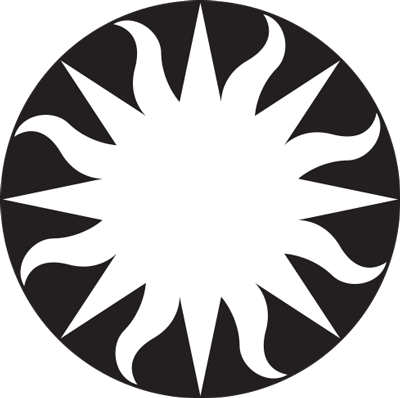Eagle Nebula

esahubble_heic2507a April 18th, 2025
Credit: ESA/Hubble & NASA, K. Noll
This towering structure of billowing gas and dark, obscuring dust might only be a small portion of the Eagle Nebula, but it is no less majestic in appearance for it. 9.5 light-years tall and 7000 light-years distant from Earth, this dusty sculpture is refreshed with the use of new processing techniques. The new Hubble image is part of ESA/Hubble’s 35th anniversary celebrations. The cosmic cloud shown here is made of cold hydrogen gas, like the rest of the Eagle Nebula. In such regions of space new stars are born among the collapsing clouds. Hot, energetic and formed in great numbers, the stars unleash an onslaught of ultraviolet light and stellar winds that sculpt the gas clouds around them. This produces fantastical shapes like the narrow pillar with blossoming head that we see here. The material in the pillar is thick and opaque to light; it is highlighted at its edges by the glow of more distant gas behind it. The blue colours of the background are dominated by emission from ionised oxygen; the red colours lower down, glowing hydrogen. Orange colours indicate starlight that has managed to break through the dust: bluer wavelengths are blocked more easily by dust, leaving the redder light to pass through. The stars responsible for carving this particular structure out of the stellar raw material lie just out of view, at the Eagle Nebula’s centre. As the pressure of their intense radiation batters and compresses the gas in this tower of clouds, it’s possible that further star formation is being ignited within. While the starry pillar has withstood these forces well so far, cutting an impressive shape against the background, eventually it will be totally eroded by the multitude of new stars that form in the Eagle Nebula. [Image Description: A tall, thin structure of dark gas clouds. It is darker and broader at the base and broadens out again at the top, with spikes, fingers and wisps of gas protruding in all directions from its head. Some parts are illuminated, but most is dark, lit only at the edges from behind. A wall of colourful gas lies behind it, bluish at the top and redder towards the bottom. Several blue and gold stars are scattered across it.]
Provider: Hubble Space Telescope | ESA
Image Source: https://esahubble.org/images/heic2507a/
Curator: ESA/Hubble, Baltimore, MD, United States
Image Use Policy: Creative Commons Attribution 4.0 International License

- ID
- heic2507a
- Subject Category
- Subject Name
- Eagle Nebula
- Credits
- ESA/Hubble & NASA, K. Noll
- Release Date
- 2025-04-18T16:00:00
- Lightyears
- Redshift
- Reference Url
- https://esahubble.org/images/heic2507a/
- Type
- Observation
- Image Quality
- Distance Notes
- Facility
- Hubble Space Telescope, Hubble Space Telescope, Hubble Space Telescope, Hubble Space Telescope, Hubble Space Telescope
- Instrument
- ACS, ACS, ACS, ACS, ACS
- Color Assignment
- Blue, Green, Red, Cyan, Red
- Band
- Optical, Optical, Optical, Optical, Optical
- Bandpass
- B, V, I, O III, N II
- Central Wavelength
- 435, 555, 814, 502, 658
- Start Time
- Integration Time
- Dataset ID
- None, None, None, None, None
- Notes
- Coordinate Frame
- ICRS
- Equinox
- J2000
- Reference Value
- 274.81817714502097, -13.7565663334316
- Reference Dimension
- 3877.0, 7800.0
- Reference Pixel
- 1938.5, 3900.0
- Scale
- -1.3867870063292236e-05, 1.3867870063292236e-05
- Rotation
- 96.9399999999999
- Coordinate System Projection:
- TAN
- Quality
- Full
- FITS Header
- Notes
- Creator (Curator)
- ESA/Hubble
- URL
- https://esahubble.org
- Name
- Telephone
- Address
- ESA Office, Space Telescope Science Institute, 3700 San Martin Dr
- City
- Baltimore
- State/Province
- MD
- Postal Code
- 21218
- Country
- United States
- Rights
- Creative Commons Attribution 4.0 International License
- Publisher
- ESA/Hubble
- Publisher ID
- esahubble
- Resource ID
- heic2507a
- Resource URL
- http://esahubble.org/media/archives/images/original/heic2507a.tif
- Related Resources
- Metadata Date
- 2025-04-17T16:34:26.785948
- Metadata Version
- 1.1
Detailed color mapping information coming soon...















